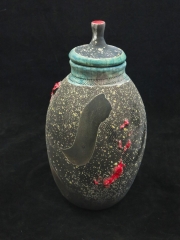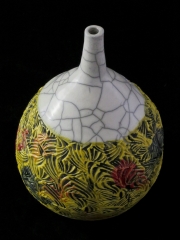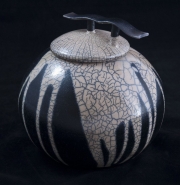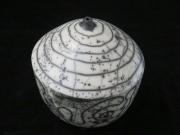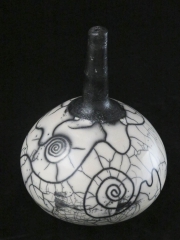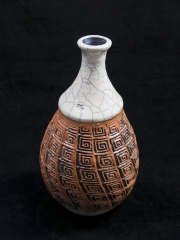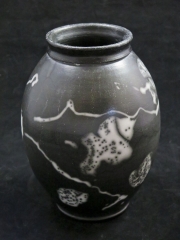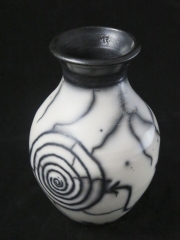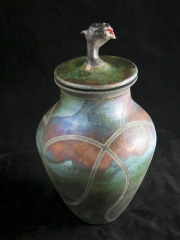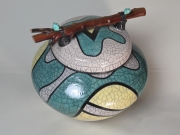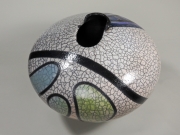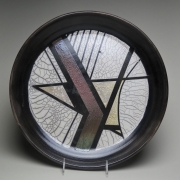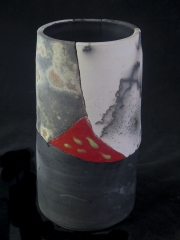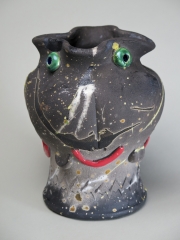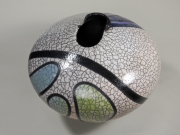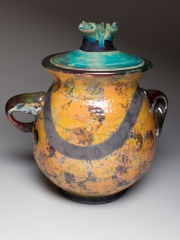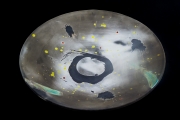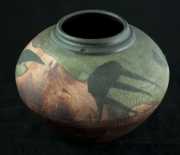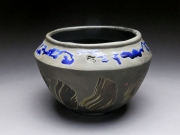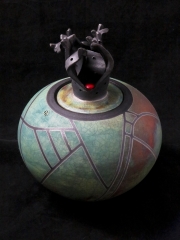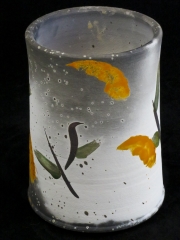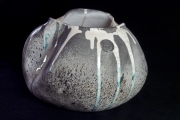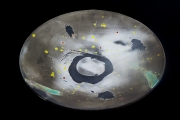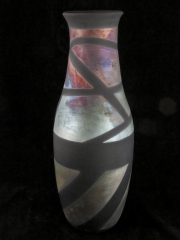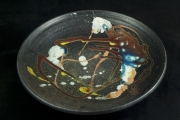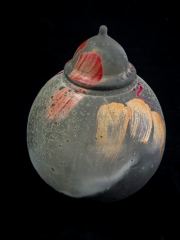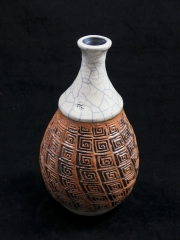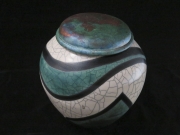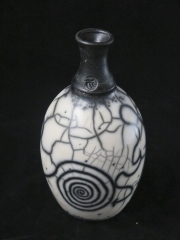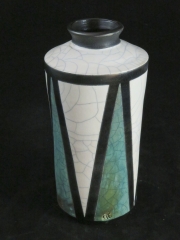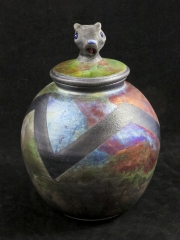Samples of Raku Pottery by Luke Metz
Some of the raku pieces shown on this page are still available. They are included to show the type of work that Luke Metz is doing. If you hover the cursor over the thumbnail, the image name will display.
If you contact Luke Metz with the name, he can tell you if the piece is still available or he has something similar.
General Information
This type of firing is known for its distinctive look. Much of the surface decoration on my pieces is unique to this type of firing. Many of my pieces stray from the traditional – I love to explore. I also do saggar and pit fire techniques and there is care information for all of these below.
This technique was originally developed in the sixteenth century in Japan. It was much different than the technique used today. In the mid-twentieth century, the process found its way to America via Paul Soldner. This marked the beginning of much experimentation and technique rapidly evolved.
The Raku Process
There are many variations on the firing process for achieving different results. The most common firing is done by quickly bringing the piece(s) up to a temperature between 1425° and 2000° depending on the glazes being used (or if a glaze is being used). This process can take anywhere from 30 minutes to a couple of hours. Compare this rapid fire to a medium temperature fire (for producing functional ware) which will typically take 7 to 18 hours. More traditional firings will take 16 to 24 hours for cooling; whereas raku cooling will be minutes to perhaps an hour. Raku subjects pieces to high thermal stress.
Various means are used for determining when a firing is complete. I use a pyrometer for watching the speed of a firing and the temperature. The final determination of completion is by visual inspection of the raku pottery while it is being fired – for example, has the glaze melted? Special glasses are worn to protect my eyes from the infrared and UV radiation.
Once the firing is complete the piece is immediately and quickly removed from the kiln and placed in another container with combustibles (such as newspaper, sawdust or pine needles) which burst into flames. I accomplish the transfer using long metal tongs or by lifting the piece with temperature resistant gloves (they will protect up to 2000° for about 20 seconds).
A lid is used to seal the container and the “smoking” or reduction process begins. During this time the oxygen is depleted (reduced) which alters the chemistry of the glazes and the carbon atoms bond with the clay giving the rich blacks characteristic of raku ware. The amount of carbonization can be modified by controlled re-introduction of oxygen during the smoking – This is referred to as re-oxidation
Raku Considerations
There are many factors that can affect the outcome of this type of firing. I could easily fill this page with a partial list. These factors or variables can be combined in countless ways. Some of the factors are more controllable than others. Some glazes are more predictable than others. The results of this type of firing is always a surprise. Often the pleasant surprises are hard if not impossible to reproduce. For me raku is dancing with fire – even with precise choreography, the dance is new each time.
This type of firing lends itself to many styles. It can be elegant, earthy, unexpected or dazzling (to name a few).
Exploration is the name of the game. Sometimes the results are astounding and sometimes they are deeply disappointing – this is part of the mystique of raku firing. Each firing becomes a learning experience.
I do quite a bit of raku firing and love doing it!
Here is a video by Luke Metz of his first adventure of lifting a piece at 1800º from the kiln. Now that I have a simple video editor, I look forward to making more videos. There are so many possibilities. Mainly, I look forward to having fun with all of this. And hopefully this site will be a source of fun for you.
Care And Use of Raku
This type of ware is not fired to vitrification – where clay turns into a glass like substance. For this reason, it is strictly decorative and not intended for food or liquid use. Also, because of this, it is more fragile than regular pottery and the clay remains porous (water will seep through it). The glazes and chemicals used to decorate the piece may be prone to leach and this means these pieces are not intended to hold food.
These pieces should not be left for extended periods of time in direct sunlight – this may cause the colors to fade. Don’t make yourself crazy with this warning. First of all, direct sunlight means sitting on a window ledge with strong sunlight. I have pieces on a north facing window ledge that have been there for months with no adverse affect. To protect the pieces from oxidation I apply a clear acrylic coat or a wax coat.
All of these care instructions apply to saggar and pit-fired pieces as well.
